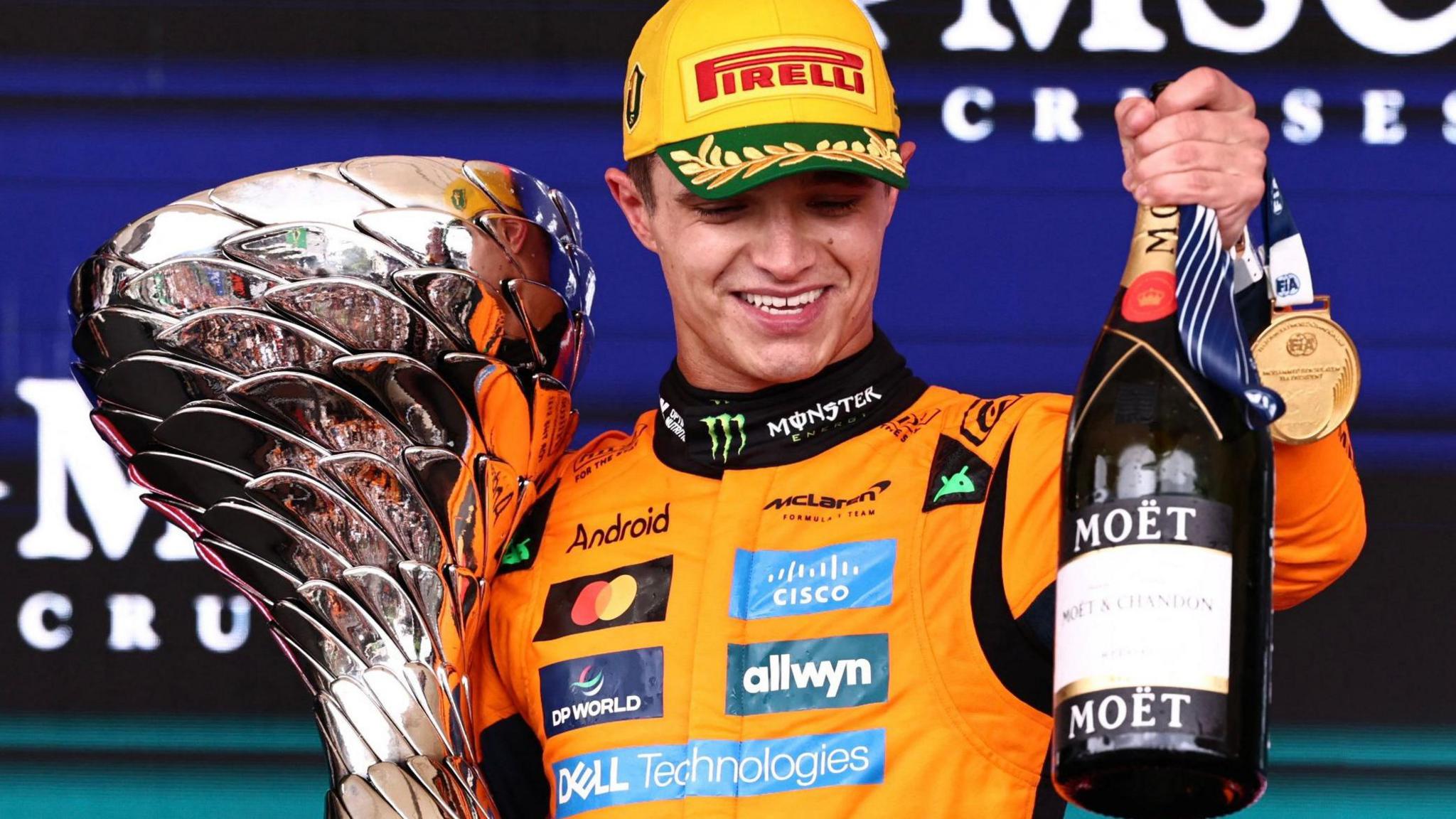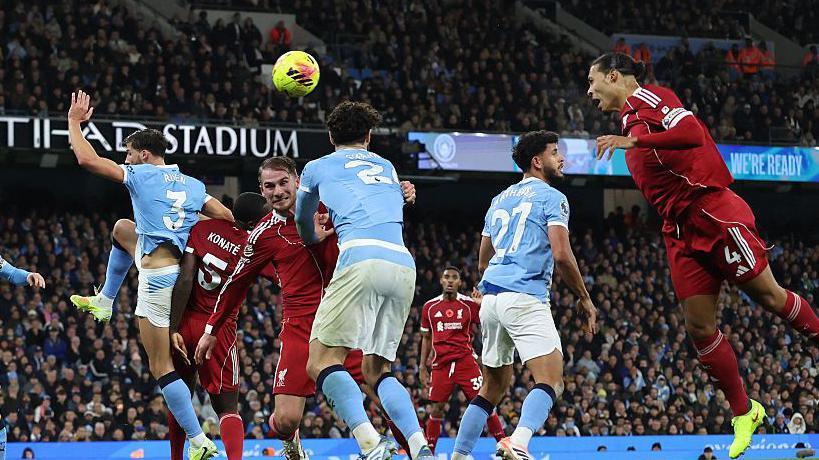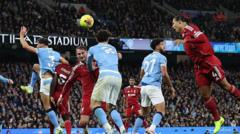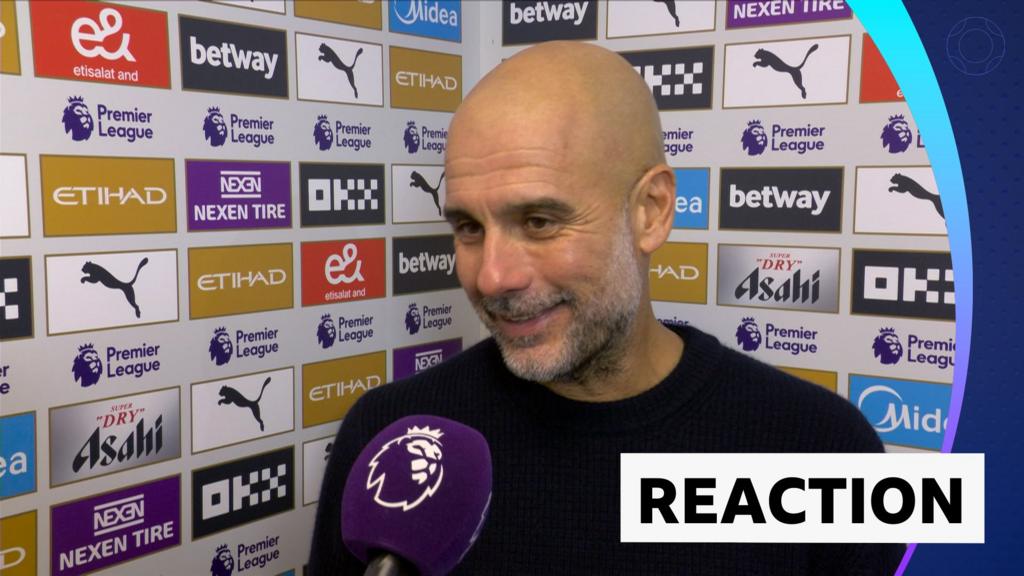- 734 Comments
McLaren’s Lando Norris extended his championship lead over team-mate and title rival Oscar Piastri to 24 points with a dominant victory at the Sao Paulo Grand Prix.
But Norris’ second consecutive victory – which takes him nearly a clear win ahead of Piastri with three grands prix remaining – was overshadowed by a remarkable recovery drive by Max Verstappen.
The Red Bull driver finished third, right behind Mercedes’ Kimi Antonelli, after starting from the pit lane and suffering an early puncture.
Verstappen, though, is now 49 points behind Norris and probably out of title contention.
The main storylines of a compelling race were:
Norris completes perfect weekend
Norris’ victory, his second in succession and his seventh in 21 races this year, was never in doubt on what the Briton described as a “perfect weekend”.
The 25-year-old controlled the race from the front after taking pole position, to add to the sprint victory from pole he took on Saturday.
The weekend has netted him a total of 33 points and put a headlock on the championship.
“To be honest, I didn’t think we were the quickest out there on track today so I’m glad to take home the win,” Norris said.
“It’s a great win but to be honest seeing how quick Max was today, I’m pretty disappointed we weren’t quicker.”
Norris got off the line well to take the lead on the first lap and navigated a chaotic opening section of the race with an early safety car followed by a virtual safety car (VSC) a few laps later before moving off into the distance to win on a two-stop strategy.
The safety car was caused by a first-lap crash involving Sauber’s Gabriel Bortoleto, who tangled with Lance Stroll’s Aston Martin at Turn Nine.
And the VSC followed a collision at the restart on lap six between Piastri, Antonelli and Ferrari’s Charles Leclerc, which led to Leclerc’s retirement and earned Piastri his penalty.
Lewis Hamilton also suffered in the early laps, his Ferrari damaged in a hit by Williams’ Carlos Sainz at Turn One, before the seven-time champion broke his front wing by misjudging a passing attempt on Alpine’s Franco Colapinto at the start of lap two.
Hamilton spent the rest of the race at the back lacking pace because of a damaged floor and eventually retired.
What a drive from Verstappen

Verstappen qualified only 16th after struggling with the performance of his car all weekend, and Red Bull decided to start him from the pit lane so they could fit a new engine and change the set-up of his car in an attempt to improve its pace.
He was up to 13th by lap seven but then had to pit because he picked up a puncture.
The world champion gained time by stopping under the VSC, but that dropped him to the back again, but he went on a two-stop strategy from there and showed strong pace to climb back up the field.
By lap 51, he was leading after Norris made his final pit stop, and it looked as if Red Bull might leave him out on his medium tyres to try to fend off Norris and then the Mercedes drivers in the closing laps.
Instead they went on the attack, pitting Verstappen for fresh soft tyres three laps later.
He emerged in fourth place, 5.6 seconds behind Russell, who he closed on quickly and passed for third place with a lovely move around the outside of Turn One on lap 63.
Verstappen then set off after Antonelli, and was with him by lap 67, with four to go, but the Italian novice drove well to keep the Red Bull at bay as the Dutchman’s tyres began to lose their edge.
“To be on the podium from the pit lane I didn’t expect that at all, even with a puncture as well at the beginning of the race,” he said.
“That is why we had to box again, so an incredible result and I’m very happy with that.”
The only question is whether an even more remarkable result was possible.
- 2 days ago
Piastri pays the penalty

Piastri was found to be at fault by the stewards for the incident with Antonelli and Leclerc.
The Australian dived down the inside and was almost fully alongside Antonelli as the three cars went into the first corner side-by-side.
But Piastri locked a wheel on the inside and the two cars collided at the apex. That flicked Antonelli into Leclerc, breaking the Ferrari’s front suspension.
Although the move looked a good one, the stewards decided Piastri was wholly responsible for the collision – something with which Leclerc did not agree – and penalised him 10 seconds.
Piastri has not finished ahead of Norris since the Dutch Grand Prix at the end of August and the momentum has really gone out of his season with only races in Las Vegas, Qatar and Abu Dhabi remaining.
Behind Piastri, Oliver Bearman drove another strong race to finish as best of the rest for Haas in sixth.


Top 10

What’s next?
Related topics
- Formula 1








